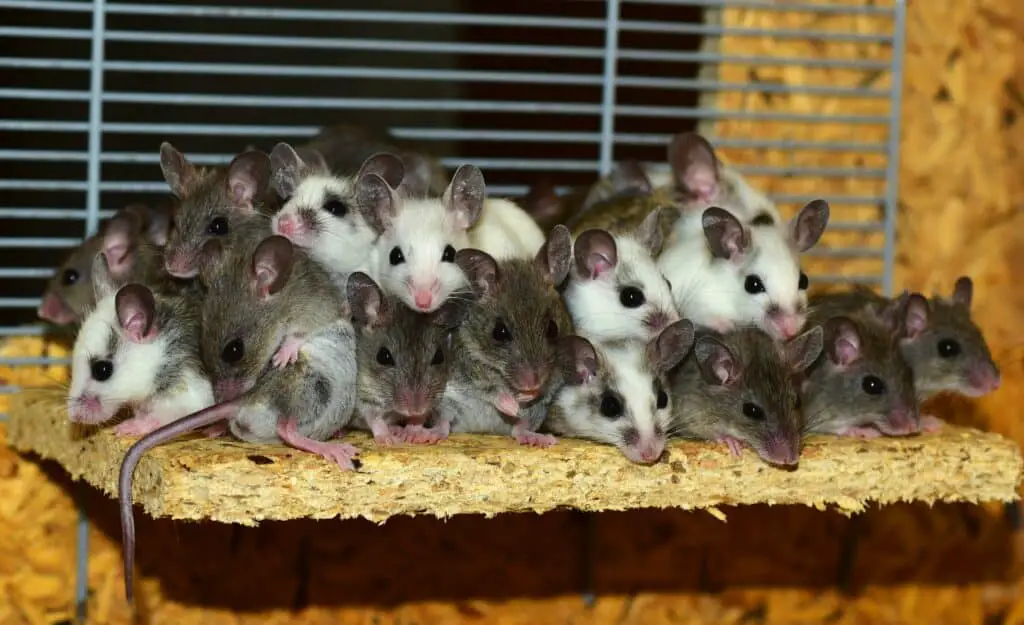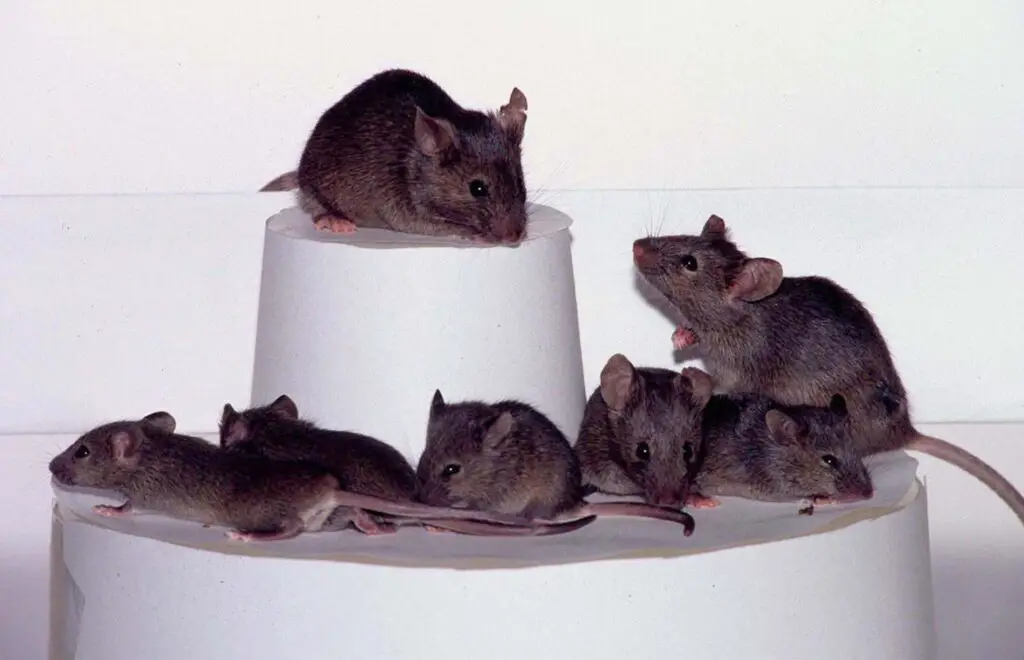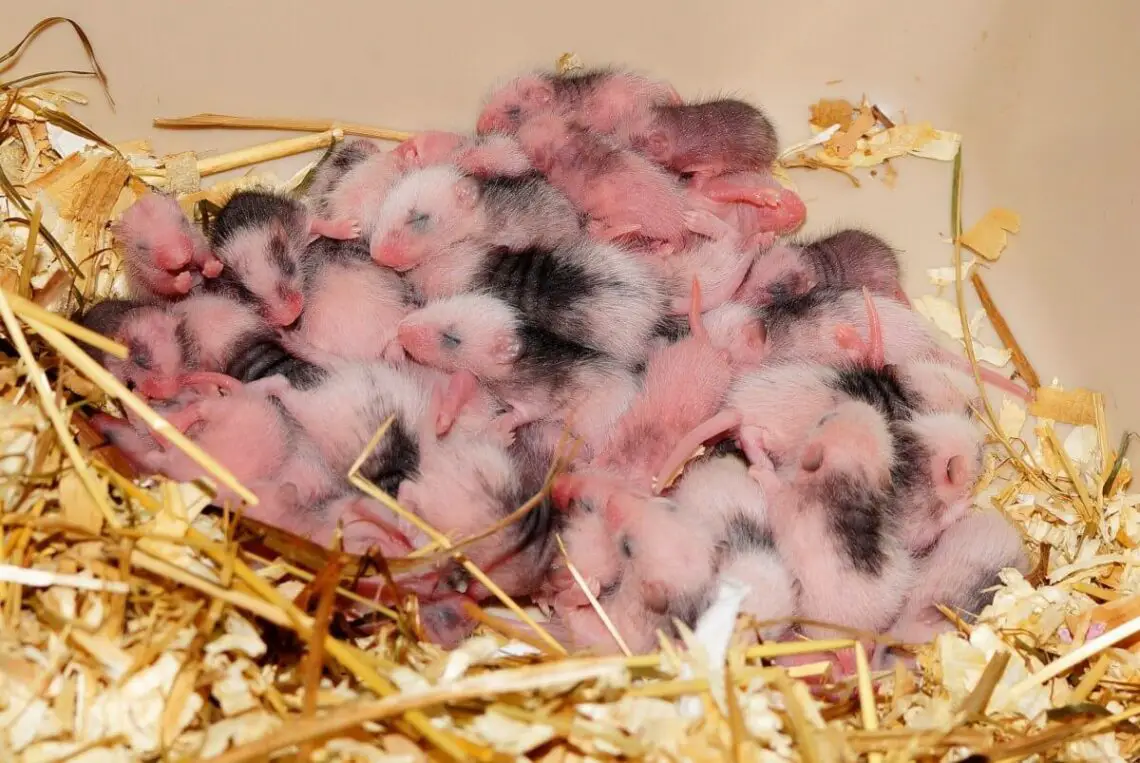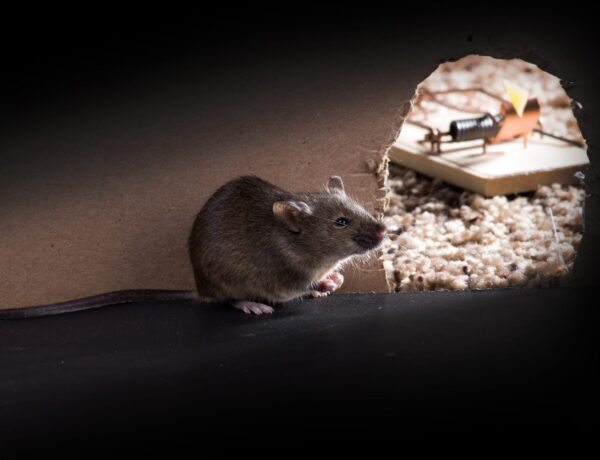Introduction
Can Mice And Rats Breed: Rats and mice are both rodents, but they are different species and cannot interbreed. In general, members of different species cannot mate and produce offspring that are fertile. This is because different species have different numbers of chromosomes and their genetic material is not compatible.
Mice and rats, both belonging to the order Rodentia, are closely related and share numerous similarities in terms of anatomy and reproductive systems. This proximity often leads to questions about whether they can interbreed. While it’s theoretically possible for mice and rats to mate due to their genetic similarities, it is exceedingly rare and challenging to achieve in practice.
The primary obstacle to interbreeding is the significant difference in size between the two species. Rats are substantially larger than mice, making physical mating challenging. Additionally, behavioral differences, territorial instincts, and the tendency for mice and rats to avoid each other in the wild further reduce the chances of interbreeding occurring naturally.

How do you introduce rats to breed?
Rats for breeding purposes require careful planning and consideration to ensure a successful and healthy breeding process.
Select Healthy Breeding Pairs: Start by choosing healthy, sexually mature rats for breeding. Avoid inbreeding to prevent genetic issues. Ensure that both the male and female rats are free from any diseases or infections.
Prepare Housing: Provide a suitable breeding environment, such as a spacious cage with nesting materials like shredded paper or cloth for the female to build a nest. Ensure that the cage is clean and free from any potential hazards.
Determine the Right Time: Female rats, known as does, have a regular estrous cycle. Introduce the male, known as a buck, to the female during her estrus, or “in heat,” which occurs approximately every 4-5 days. Watch for behavioral cues like increased receptivity and scent marking.
Supervised Introduction: Introduce the male and female in a neutral territory or in the female’s cage. Supervise their interaction closely to ensure they don’t fight. Sometimes, it may take a few introductions for them to become comfortable with each other.
Monitor Copulation: Rats typically mate quickly, and the copulation process can be quite vigorous. Be attentive to ensure mating occurs. If unsuccessful, try reintroducing them during the next estrus cycle.
Separate After Mating: Once mating has occurred, separate the male from the female to prevent any potential aggression or harm. Female rats can become aggressive toward males after mating.
Pregnancy and Birth: A pregnant female rat will show signs of weight gain and increased appetite. Provide her with a quiet, comfortable space for birthing and raising her pups.
What is rat breeding?
Male rats are capable of impregnating females as early as 5 weeks of age, although this is not common. There are two breeding schemes: polygamous -placing a single male with multiple females, and monogamous – a single male with a single female.
Rat breeding refers to the controlled and purposeful reproduction of rats, typically carried out by breeders or researchers for specific purposes. This practice involves selecting healthy, genetically diverse rats to produce offspring with desired traits, whether for scientific research, pet ownership, or for the development of unique rat breeds.
Selective Pairing: Breeders carefully choose pairs of rats based on their genetic makeup, physical characteristics, temperament, and health. The goal is to enhance desirable traits and minimize the risk of genetic issues.
Research and Genetics: In scientific contexts, rat breeding is used to study genetics, behavior, and disease. By breeding rats with specific genetic mutations or traits, researchers can better understand human diseases and behavior.
Pet Breeding: Some breeders focus on producing rats as pets. They aim to create friendly, sociable, and healthy rats with appealing coat colors and patterns.
Ethical Considerations: Responsible rat breeding involves ethical considerations. Breeders should prioritize the well-being of the animals, ensuring they are housed in clean, spacious, and safe environments.
Record Keeping: Breeders maintain detailed records of breeding pairs, birthdates, genetic information, and health history to track the lineage and health of their rats.
Health Care: Proper healthcare is essential in rat breeding. This includes regular veterinary check-ups, vaccinations when necessary, and providing a balanced diet.
Reproduction Control: Breeders may use methods to control reproduction, such as separating males and females when not breeding or using controlled lighting to simulate seasons that influence breeding behavior.
Rat breeding can serve various purposes, from scientific advancements to producing beloved pet companions. However, it requires dedication, knowledge, and ethical considerations to ensure the well-being of the animals involved. Responsible breeders prioritize the health and happiness of their rats throughout the breeding process.
How do you breed mice?
An outline of mouse breeding by the natural mating method is as follows. Male mice and female mice live together in a cage where they mate, and then after a gestation period of about 20 days, baby mice are born. From one doe, 5 to 10 baby mice can be produced (this varies due to strain).
Breeding mice involves careful planning and management to ensure healthy and successful reproduction.
Select Breeding Pairs: Choose healthy, sexually mature mice for breeding. Mice should be free of diseases and genetic abnormalities. Avoid breeding close relatives to prevent genetic issues.
Housing and Environment: Provide a clean, spacious, and well-maintained cage with nesting materials like paper, cotton, or nesting boxes. Maintain suitable environmental conditions, including temperature, humidity, and lighting.
Monitor Estrus Cycles: Female mice, called does, have regular estrous cycles, typically occurring every 4-5 days. Observe behavioral and physical cues, such as increased receptivity, vaginal discharge, and swollen vulva, to determine when a female is in estrus.
Introduce Mice: Place the chosen male, known as a buck, into the female’s cage or a neutral territory when the female is in estrus. Monitor their interaction to ensure successful mating. Mice usually mate quickly.
Separate After Mating: After successful mating, separate the male from the female to prevent further stress or aggression.
Pregnancy and Birth: A pregnant mouse will gain weight and build a nest with nesting materials. Provide her with a quiet, undisturbed space to give birth. Gestation typically lasts 19-21 days.
Post-Birth Care: Ensure the mother mouse receives a balanced diet and plenty of fresh water during and after pregnancy. Handle the newborn pups minimally to avoid causing stress to the mother.
Breeding mice requires diligence and knowledge of their biology and behavior. Ethical and responsible breeding practices are essential to ensure the health and welfare of the animals involved.
Why are mice not breeding?
Changing cages more frequently than 1-2 times per week can agitate the mice, and if you are also frequently opening the cage to check on the well-being of the mice, they may exhibit reduced breeding performance. Besides over-handling, removing males from breeding cages can negatively impact breeding performance.
The failure of mice to breed can be attributed to several factors, ranging from environmental conditions to health issues. Understanding why mice are not breeding is crucial for those involved in mouse breeding programs, whether for research purposes or as pet owners.
Age: Mice may not breed if they are too young or too old. Female mice usually reach sexual maturity at around 6-8 weeks of age, while males are ready to breed a bit earlier. Breeding mice that are too young or too old can result in infertility.
Stress: Stress can significantly impact a mouse’s reproductive capabilities. Factors like overcrowded living conditions, loud noises, frequent disturbances, or changes in their environment can stress mice and disrupt their breeding behavior.
Health Issues: Illness, disease, or underlying health problems can affect a mouse’s ability to breed. Ensure that mice are free from infections, parasites, and other health issues. A thorough veterinary checkup may be necessary.
Incompatibility: Sometimes, pairing mice that are not compatible can lead to unsuccessful breeding. Compatibility issues can result in aggression between the mice or a lack of interest in mating.
Inadequate Nutrition: Mice require a balanced diet to maintain good health and reproductive function. Poor nutrition can lead to reproductive problems.
Environmental Factors: Inconsistent lighting, temperature fluctuations, or inadequate nesting materials can discourage breeding.
Genetic Factors: Some genetic mutations can affect fertility in mice, leading to breeding difficulties.
Where do rats breed?
Old sewers and drains which are in poor repair or not sealed off can provide good harbourage for rats – and if there is a good food supply in the vicinity, you can be almost certain there will be a rat breeding ground.
Rats, like many other rodents, are highly adaptable when it comes to breeding locations. They can be found breeding in a variety of habitats, both natural and human-made.
Urban Environments: Rats are notorious for thriving in urban areas. They often breed in sewers, basements, abandoned buildings, and even within the walls and crawl spaces of homes and commercial properties.
Outdoor Burrows: In more rural or suburban settings, rats may breed in burrows dug in the ground, such as along riverbanks, under piles of debris, or in overgrown vegetation.
Fields and Farms: Agricultural areas can provide rats with ample food sources, making them potential breeding grounds. They may create burrows in fields, barns, or agricultural storage areas.
Trash Dumps: Rats are attracted to garbage and waste, and they may establish breeding colonies in or around trash dumps, landfills, or other places with abundant food waste.
Nesting in Structures: Rats are skilled at finding sheltered areas to build nests for breeding. These nests may be in attics, crawl spaces, insulation, or any secluded nook or cranny in a building.
Natural Habitats: In natural environments like forests, grasslands, and wetlands, rats can breed in tree hollows, burrows, or ground nests. They adapt to their surroundings to create secure breeding sites.
Do rats breed faster than mice?
One of the reasons that mouse infestations can grow so quickly is that mice breed at an incredibly fast rate. Rats don’t breed with quite the same fervor as mice, but they still breed much more quickly than many people realize.
Rats and mice are both known for their rapid reproductive rates, but whether rats breed faster than mice depends on various factors, including the species, environmental conditions, and individual characteristics.
Species Differences: Different species of rats and mice have varying reproductive rates. For example, the common house mouse (Mus musculus) is known for its exceptionally high reproductive capacity, with a single pair capable of producing numerous litters in a year. However, some rat species, like the brown rat (Rattus norvegicus), are also prolific breeders.
Litter Size: Mice generally have smaller litters compared to rats. A mouse litter can consist of 5 to 12 pups on average, while rat litters can range from 6 to 12 or more pups. Rats typically have larger litters, which can contribute to their rapid population growth.
Gestation Period: Mice have a shorter gestation period than rats. The gestation period for mice is around 19 to 21 days, while for rats, it is typically 21 to 23 days. This means that mice can potentially produce more litters within a year.
Age at Sexual Maturity: Both mice and rats reach sexual maturity early, with mice often maturing slightly faster. Female mice can become sexually mature at around 6 to 8 weeks, while female rats usually mature at 6 to 8 weeks as well.
Environmental Factors: Breeding rates are highly influenced by environmental conditions, including the availability of food, shelter, and suitable breeding sites. Ample resources can lead to higher reproductive rates for both rats and mice.
While both rats and mice are prolific breeders, mice generally have a shorter gestation period and may reach sexual maturity a bit earlier, potentially allowing them to reproduce more frequently. However, the specific breeding rate can vary between species and even within populations based on environmental factors and individual characteristics. Regardless of the species, effective pest control measures are often necessary to manage their populations in urban and agricultural settings.
Why can’t rats and mice breed?
Rats and mice are not that closely related. Under normal circumstances, rats and mice are not attracted to each other and will not mate. Even if the sperm of one and the eggs of the other are mixed together artificially, fertilization will not occur: the eggs of one do not allow entry of the other’s sperm.
Rats and mice are closely related rodents, and while they share many biological similarities, they are generally considered separate species within the same family (Muridae). Interbreeding between these two species is rare and usually unsuccessful.
Genetic Differences: Rats and mice have distinct genetic differences that make successful interbreeding challenging. These differences encompass chromosome numbers, genetic mutations, and genetic incompatibilities, which hinder the formation of viable offspring.
Size and Anatomy: Rats are significantly larger than mice, both in terms of body size and reproductive organs. This size difference can make physical mating difficult, as the size mismatch often prevents successful copulation.
Behavioral Differences: Rats and mice have different social behaviors and mating rituals. In the wild, they are more likely to avoid each other than attempt to mate. Mating behaviors and courtship rituals are species-specific and not easily transferable between the two.
Territorial Nature: Rats and mice are territorial animals, and their territories rarely overlap. This territoriality further reduces opportunities for interbreeding.
Divergent Evolution: Over millions of years, rats and mice have evolved separately, adapting to different ecological niches. These adaptations have led to distinct physiological and behavioral differences, reducing the likelihood of successful interbreeding.
While it is theoretically possible for rats and mice to hybridize in controlled laboratory settings through artificial insemination, such occurrences are extremely rare and typically result in offspring with various health and developmental issues. In nature, the chances of rats and mice successfully interbreeding are minimal due to their genetic, anatomical, and behavioral differences, and they are generally considered separate and distinct species.
Can mice and rats make babies?
Many household pets like hamsters or rats can quickly breed and give birth to multiple litters of young throughout the year. Mice can similarly give birth frequently. These pests only remain pregnant for around twenty days and don’t have to wait long to have more offspring.
Mice and rats belong to the same family of rodents (Muridae), but they are considered separate species. While they share many biological similarities due to their close genetic relationship, natural interbreeding between mice and rats is extremely rare and typically unsuccessful.
Genetic Differences: Mice and rats have distinct genetic differences that pose significant obstacles to successful interbreeding. These differences involve chromosome numbers, genetic mutations, and other genetic incompatibilities, making it challenging for them to produce viable offspring.
Size Discrepancy: Rats are notably larger than mice, both in terms of body size and reproductive anatomy. This size difference makes it physically difficult for a mouse to mate with a rat, as their reproductive organs are not compatible.
Behavioral Barriers: Mice and rats exhibit different mating behaviors and courtship rituals, which are species-specific. In the wild, they are more likely to avoid each other or exhibit territorial aggression rather than engaging in interspecies mating.
Evolutionary Divergence: Over millions of years, mice and rats have evolved separately, adapting to distinct ecological niches. These adaptations have led to significant physiological and behavioral differences, further reducing the likelihood of successful interbreeding.
While artificial insemination techniques have been used in controlled laboratory settings to attempt interbreeding between mice and rats, such efforts have resulted in very limited success and often produced offspring with developmental abnormalities and health issues. In the natural world, the chances of mice and rats successfully mating and producing hybrid offspring are extremely remote due to the numerous biological and behavioral barriers that exist between these two species. They are generally considered separate and distinct species within the rodent family.

Conclusion
The possibility of mice and rats interbreeding is exceedingly rare and fraught with numerous biological, genetic, anatomical, and behavioral barriers. While limited success in interbreeding has been achieved in controlled laboratory environments through artificial insemination, it is crucial to recognize that such occurrences are rare and typically result in offspring with developmental abnormalities and health issues.
Genetic disparities, such as differing chromosome numbers and genetic mutations, create substantial incompatibilities between mice and rats, preventing the formation of viable hybrid offspring. Additionally, the size discrepancy between these rodents, both in terms of body size and reproductive anatomy, makes successful mating unlikely. While both belong to the Muridae family of rodents and share a close evolutionary relationship, they are distinct species with significant differences.
Behavioral differences play a critical role in the impossibility of interbreeding rats. Mice and rats have distinct courtship rituals and mating behaviors, which are specific to their respective species. The extended evolutionary divergence between mice and rats, spanning millions of years, has led to distinct adaptations, physiology, and behavior, making them even less likely to interbreed successfully.



No Comments